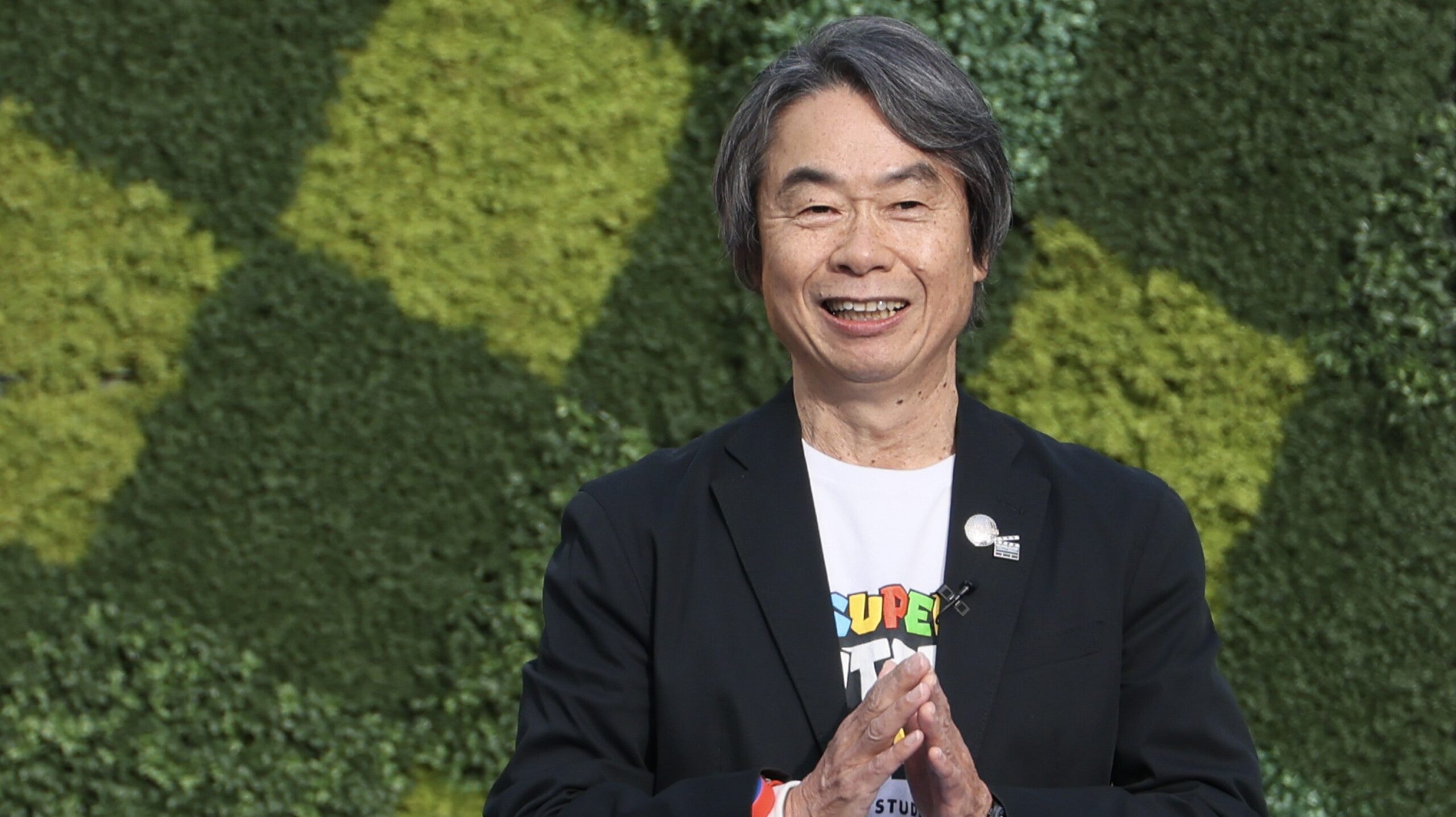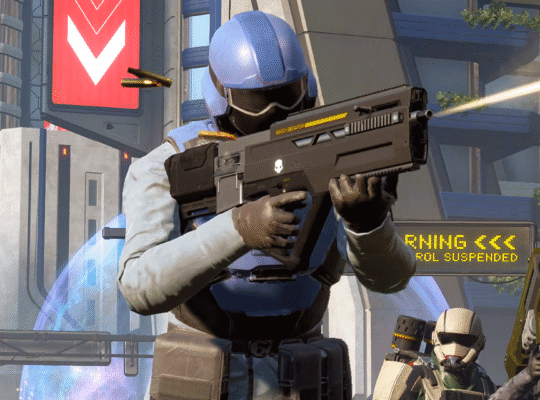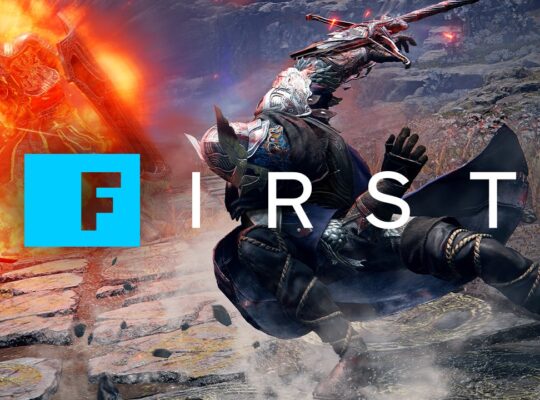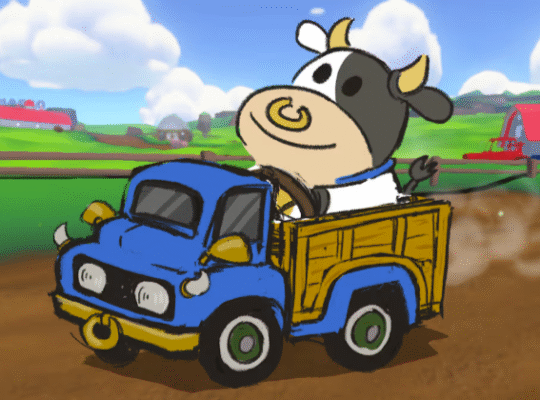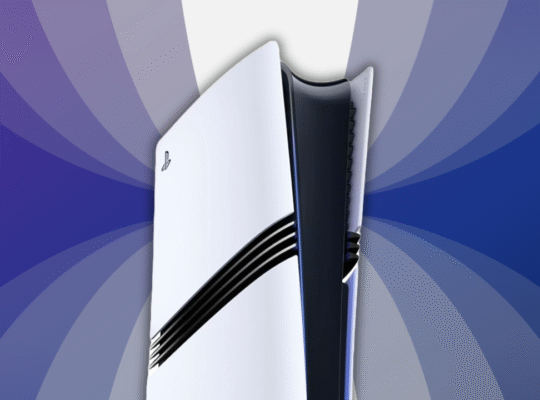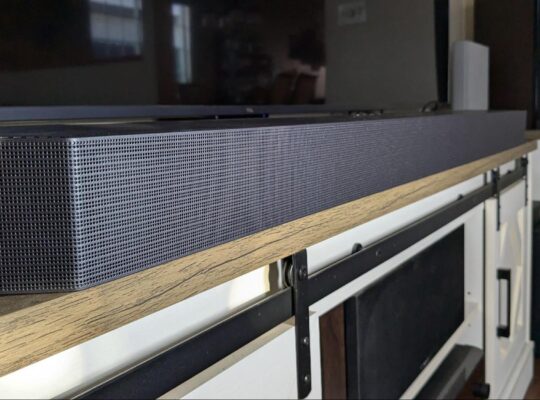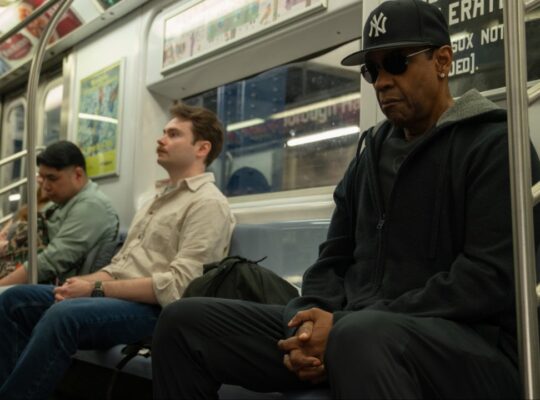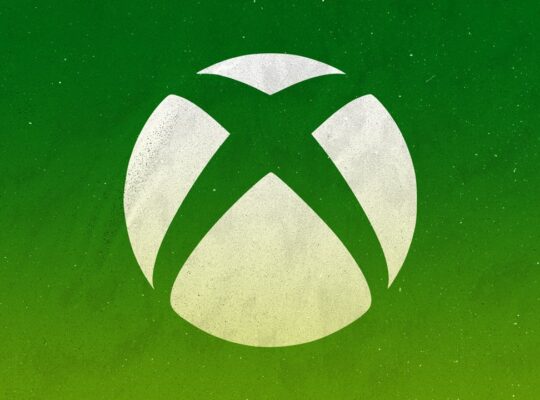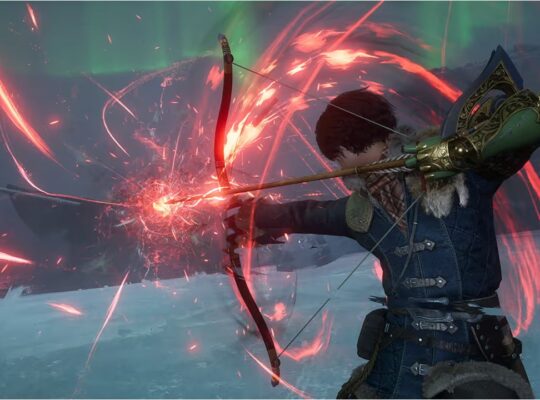
In May of 2015, Nintendo officially announced plans to partner with Universal Parks & Resorts to create theme parks based on popular Nintendo games and characters, a decision that marked a bold new foray into expanding Nintendo’s reach to new corners of the entertainment world. A decade later, that vision has come into fruition in the form of Super Nintendo World, a vibrant theme park brimming with rides, interactive elements, gift shops, and character-themed dining experiences in Japan, Los Angeles, Florida, and soon, Singapore.
Ahead of the launch of Universal’s new Epic Universe theme park in Orlando, Florida (along with the addition of the new Donkey Kong Country theme park expansion for the first time in America) I sat down with Shigeru Miyamoto, legendary game designer and creator of iconic characters like Super Mario, Donkey Kong, and more to talk about how these parks came together, working with the next generation of Nintendo game developers, and why he’s excited for the upcoming Nintendo Switch 2 console.
IGN: This is my first time in Super Nintendo World. It’s incredible. As a longtime Nintendo fan walking around, I just feel completely overwhelmed and I can’t imagine what it’s like for you. So when you first got to step into this theme park full of your creations, what was your initial feeling?
Miyamoto: So there’s two things I’ll share with you. One is that I have a background in industrial design and I work for an entertainment company called Nintendo. And so as an extension of that, I had this dream that I wanted to one day work on a theme park. And so to be able to collaborate and work together with the professionals of a theme park like Universal is something that’s a dream come true.
The second thing is that the idea of say, let’s create a Mario Kart or let’s create a Donkey Kong, those are more simpler decisions. But when it comes to, let’s create a land that is Super Mario, we started to think, what do we need to do? What would make fans happy? If we make it too fake, then it’s going to seem toy-like.
And so Universal created this block for us as a sample and we realized, look, if we can create a block of this quality, then this is something we can work with. And so when we expanded it out to create a bigger landscape, and the architects at Universal said, ‘Well, this is going to be like creating an entire building,’ we said, ‘Well, that’s the kind of commitment that we need to go with,’ and we decided to move forward.
And then from there we thought about, well, we want a really giant piranha plant. We want shells moving, we want the clouds moving. All of that, we went all in and asked Universal to create for us. And once that was all created and once they were moving in unison and seeing it, it really got me to realize even myself just feeling like, wow, we made something great.
And now, when you’re talking about drawing, the more time, the more effort you put into drawing, adding details, it becomes more convincing, more appealing. And I realize it’s the same way when you’re creating a real life recreation of a landscape; the more you put in, the more it’s convincing. And I realize this is what happens when adults get very serious and put their work into it.
IGN: I loved finding all the little Pikmin around the park. And then I noticed today that there — and I don’t want to spoil where they are — but there’s some in the Donkey Kong section, so I was like, yes, they put them in there too. What’s one of your favorite little details that’s in the parks?
Miyamoto: So first of all, I think it ties into the interactivity with the Power-Up band. What I really wanted to do was have an empty wall that you would touch the Power-Up band and then an 8-bit drawing would pop up. But that would be almost impossible to find. So we had to put a marker in there. But those kinds of interactivity are one of the Easter eggs that I really, really like.
IGN: I found one of the toads today…
Miyamoto: And it’s really the expectation of not knowing what’s going to happen when you tap that. I think that really translates to how Nintendo develops their game in that there’s a certain kind of unknown and expectation that players have when they engage with our games and we provide a response to that expectation. I think that really falls in line with what… that’s what it looks like when we translate that into an actual real life landscape.
The very obvious one is if you hit a block, you get coins.
IGN: Yeah, I hit the POW block today. I was like, am I going to break everything in this place?
Miyamoto: And the Power-Up band, I hope you know, does track everything you do. So it tracks everything, every block that you hit. So that’s also just a lot of work that we put into making sure that that’s possible.
And going back to Pikmin, I really appreciate you bringing it up. I spent a lot of time the past five, six years really wanting to grow Pikmin. Obviously a lot of that is focused around Pikmin Bloom and there was also new Pikmin titles that released. But I wanted to see if there’s other ways that we can have people engage and get to know Pikmin that’s outside of the population that plays video games, for example.
And it really stems back to 20 years ago when we did a presentation where it starts off with, there’s a Pikmin next to you. And so in Nintendo there’s sort of like an unwritten rule. Mario needs to stay in the Mario universe, or Splatoon needs to stay in Splatoon, and we don’t use different characters in the same place. But Pikmin has this kind of unwritten rule where they’re okay to appear with other characters.
IGN: They’re small and sneaky, they can get into anything! I love Pikmin. I still bring my 3DS with me everywhere and my kid watches the Pikmin shorts that you worked on. We love them. Do you ever think that Pikmin could expand into more areas at the theme park or movies, longer shows and stuff like that? Because they’re awesome, and people need more Pikmin.
Miyamoto: Obviously I can’t say yes or no here. But I really see Nintendo as sort of like a talent agency and we have within our roster a lot of talented characters. So we create a game with a certain gameplay concept, gameplay experience, and then we look at the roster and see who would best fit this gameplay concept or experience.
So looking at things from that perspective, I think Pikmin has a lot of potential to be used in many different occasions. When you’re looking at small kids, they have a certain appeal for things that are cute and when they grow older, maybe in their twenties, they start to lose appeal for that. But I think Pikmin has this unique ability to have appeal across a broad range in that it’s still appealing for both younger audiences and older audiences and in Japan. And so I’m hoping that we can expand that globally. So whether it’s some kind of a movie or show, things like that would be really fun.
IGN: I agree. So perfect follow-up question for that: you’ve been doing this for a long time and you still have an incredible sense of humor and wonder and whimsy, and a lot of people when they get old they kind of lose that. So how do you hold onto that?
Miyamoto: So first of all, if I say yeah to that question, that would be offensive to maybe people of my age. So I don’t want to do that.
But in reality I feel very fortunate and lucky in that all I feel like I’m doing is just working. I have the opportunity to work with creative people, when it comes to working on theme parks or when it comes to working on movies, really being able to engage with new people lets me expend a lot of this energy that I haven’t been able to expend through just games by virtue of working with these people. And when it comes to game development too, I continue to work with a newer generation of developers that work on the titles that we work on. So it’s not to say I’m sapping their energy, but it really gives me this great stimulus that feeds the energy and creativity that I yearn for.
Really when we’re talking about working with younger people, I always tell them trying to chase the trend or trying to one-up the thing that’s the most popular thing right now is going to be difficult. It’s going to be stressful. I really feel like what’s important is to be able to create something new, try to do something that nobody’s done before. And ostensibly that might sound like it’s stressful, but the process of coming up with something new, coming up with a new experience is very fun.
And likewise, when we’re working with people at Universal, I think they don’t want to just try to create a better ride that has already existed. What they also want to do and they’re sensitive to is really trying to create again, something that nobody else has done. And so coming back to your question, I really think it’s about trying to do something that no one’s ever done and really trying to express that. And whether you succeed or fail is not the big deal. It’s to enjoy the process. For example, I would love to create a rollercoaster where you jump! And then the people at Universal, they’ll be like, well, we can look into it…
(Note: the new Mine-Cart Madness rollercoaster ride at Universal’s Donkey Kong Country area features an innovative sideways track system that hides the rails from the rider, simulating the track jumping mine cart levels from popular Donkey Kong Country games, so Mr. Miyamoto’s wish of a “rollercoaster where you jump” came true.)
IGN: You created Donkey Kong on pieces of paper, he’s your baby. Donkey Kong 94, you were a producer on that. It was one of the first times he became more expressive. He’s back with a new game, he’s got a new design. What’s it like seeing that character’s new design now and seeing this character grow up with you?
Miyamoto: So when it comes to character creation and working with characters, I still take an active role in that. And looking back to the first generation Donkey Kong Country, we worked with Rare to create Donkey Kong Country.
When we were talking about trying to create new versions, evolving Donkey Kong, we created the game called Jungle Beat. We worked together with the team that made 3D Mario. With the technology that was available at the time, we were able to make Donkey Kong more expressive. And going back to the design that Rare came up with, we reevaluated; what can we do with the design to make it more expressive? And then when it comes to the movie, we decided to move forward with this new generation Donkey Kong design.
IGN: So Nintendo Switch 2 is almost here. My family has a calendar on our fridge where we’re crossing off the days until it’s here. In your opinion, what’s the most exciting thing about it?
Miyamoto: So I’d love to, but I’ve been told by PR that this is not an interview about Nintendo Switch 2.
Looking at the younger, next generation of players, I think one of the most exciting things about Nintendo Switch 2 is the ability to have the upgrade patches to original games that provide a more enhanced experience and then add on top of that new experiences.
And so leaving the development environment as is, we’re able to build these games and now that we have more powerful hardware, there’s more power left over that can be used for other experiences. I think for example, it gives indie developers the ability to expand on the unique experiences that they’ve been able to provide with a smaller group.
And so because of that, I think the fact that the mouse or voice chat is part of the Nintendo Switch 2 package is something that’s very attractive and exciting. And obviously look forward to the new Donkey Kong game as well!
IGN: I really love the merchandise here. I have a growing collection of Mario toys at home. Were you into toys and action figures when you were a kid?
Miyamoto: I grew up in an age where toys were hard to come by, but I did like toys and especially loved plastic models to the point where I would build them and then start painting them, like creating a diorama.
IGN: I love that. I went on the Donkey Kong ride today and I honestly thought I was going to crash into Donkey Kong for a second. What was it like going on that ride for the first time?
Miyamoto: So let’s see. I think when you mentioned crashing into Donkey Kong, obviously I’ve seen multiple simulations. It was part of the plan, and yet seeing it come together was very exciting. So when we started creating the team to work on this project, we started off with maybe 10 or so people on the Nintendo side. And we started meeting and discussing. It was then that I realized that maybe not everybody likes rollercoasters. However, usually it’s the rollercoaster that’s the big, marquee attraction at a theme park.
And so I thought this was very similar to information that comes to us about gaming, in that a lot of the information that comes up are topics that say, core gamers are really vocal about. And so sometimes the information that non-gamers are speaking about, it just doesn’t surface. And I thought it was very similar.
And so when it comes to creating rollercoasters, I really wanted to create something that can be enjoyed across three generations. And all three generations would say, ‘I want to ride that again.’ For example, if you make it too boring, then the grownups might not want to ride it again. But again, we really wanted to create a rollercoaster that can be enjoyed and repeatedly enjoyed by multiple generations. I felt like if we could do that, that’s what would make it very Nintendo-like.
And so with the help of a lot of the ideas that Universal has provided us, really going beyond thinking of rollercoasters as something like a ride that’s on rails, but adding environments, kind of telling a story like through sound effects, I think you could say it as, we were able to create a unique attraction that happens to use rollercoasters.
IGN: So you’ve done everything from theme parks to video games and movies. Is there anything that you’ve never got to do that you’ve always wanted to do?
Miyamoto: No, there’s nothing in particular that I can think of right now other than to say that I want to continue in this creative endeavor, whether it’s movies or anything else. And so we’ve come to a point where even people who don’t play video games recognize Nintendo characters. So I really hope that we can continue to expand that, such that when you ask anybody globally that they know what Nintendo is.
Super Nintendo World and the Donkey Kong Country expansion can be found at Universal’s Epic Universe theme park when it opens to the public in Orlando, Florida on May 22. IGN will have a full review of the park expansion in the days ahead in case you’re wondering what it’s like to meet an animatronic Cranky Kong or eat an ice cream sundae out of a large Donkey Kong barrel mug.
Photo by Rodin Eckenroth/Getty Images.
Wesley is Director, News at IGN. Find him on Twitter at @wyp100. You can reach Wesley at wesley_yinpoole@ign.com or confidentially at wyp100@proton.me.


